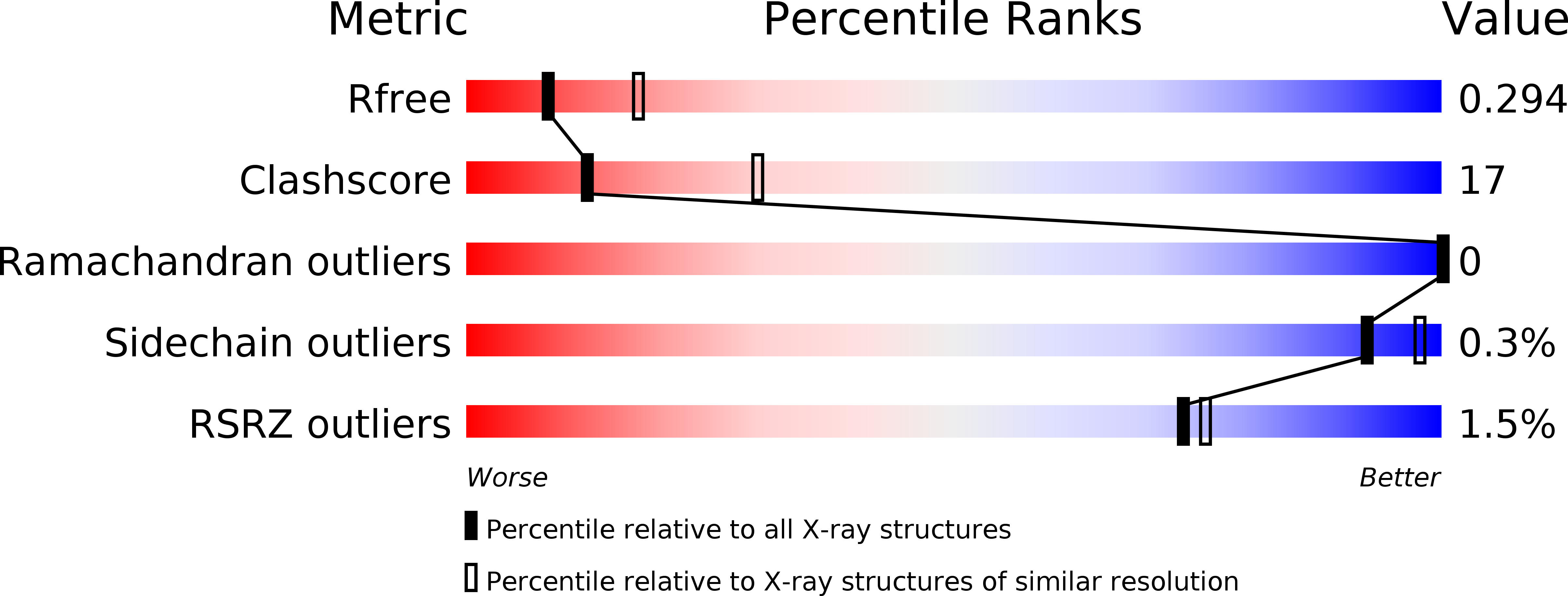
Deposition Date
2014-08-19
Release Date
2014-12-31
Last Version Date
2024-11-06
Entry Detail
PDB ID:
4W60
Keywords:
Title:
The structure of Vaccina virus H7 protein displays A Novel Phosphoinositide binding fold required for membrane biogenesis
Biological Source:
Source Organism:
Vaccinia virus (Taxon ID: 10254)
Host Organism:
Method Details:
Experimental Method:
Resolution:
2.70 Å
R-Value Free:
0.30
R-Value Work:
0.25
R-Value Observed:
0.26
Space Group:
P 21 21 2


